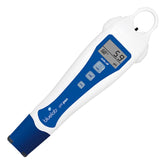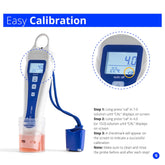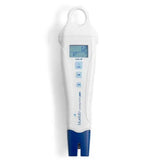Comprehensive Guide to Setting Up a 5000 Square Feet Indoor Cultivation Facility
Comprehensive Guide to Setting Up a 5000 Square Feet Indoor Cultivation Facility
Setting up a 5000 square feet indoor cultivation facility requires meticulous planning and strategic investment in various essential components to ensure optimal plant growth, efficiency, and regulatory compliance. This comprehensive guide outlines the key considerations, costs, and best practices involved in establishing and managing such a facility.
1. Lighting Systems
Selecting the right lighting system is critical for indoor cultivation. LED grow lights are favored for their energy efficiency and customizable spectrum, crucial for different growth stages of plants. For a 5000 sq ft facility, investing in premium LED fixtures can range from $100,000 to $150,000. This expenditure ensures adequate light intensity and spectrum optimization, supporting robust plant growth and maximizing yields.
2. Nutrients and Growing Medium
Proper nutrition is fundamental to plant health and productivity. Allocating approximately $20,000 to $30,000 for high-quality nutrients and suitable growing medium—whether soil, hydroponics, or another system—ensures plants receive essential minerals and nutrients tailored to their specific growth needs. This investment supports healthy root development, flowering, and overall crop quality.
3. HVAC and Environmental Control
Maintaining stable environmental conditions is crucial for indoor cultivation. An HVAC system tailored to a 5000 sq ft space, costing between $50,000 to $70,000, regulates temperature, humidity, and airflow. Consistent environmental parameters not only optimize plant metabolism and growth rates but also mitigate the risk of pests and diseases, ensuring a controlled and productive growing environment.
4. Irrigation Systems
Efficient irrigation systems, such as drip irrigation or ebb and flow systems, are essential for delivering water and nutrients evenly to plants. These systems minimize water waste and ensure consistent moisture levels, contributing to healthy root development and optimized nutrient uptake. Investing in reliable irrigation infrastructure supports efficient resource utilization and enhances overall crop yield and quality.
5. Space Allocation and Layout
Strategic space allocation within the facility is crucial for workflow optimization and maximizing yield potential. Designating specific areas for vegetative growth, flowering, cloning, and post-harvest processes like drying and curing streamlines operational efficiency. Well-planned layouts facilitate seamless movement between growth stages, ensuring systematic plant care and management throughout the cultivation cycle.
6. Standard Operating Procedures (SOPs)
Establishing comprehensive SOPs is essential for maintaining consistency, quality, and compliance with industry standards. SOPs cover various aspects, including hygiene protocols, pest management strategies, nutrient application guidelines, and harvesting procedures. Documenting and implementing SOPs fosters operational excellence, minimizes risks, and ensures adherence to regulatory requirements, thereby safeguarding crop integrity and market competitiveness.
7. Cost Considerations and Budgeting
Setting up a 5000 sq ft indoor cultivation facility entails significant initial investments. The estimated total investment ranges from $205,000 to $305,000, encompassing lighting, nutrients, HVAC systems, irrigation infrastructure, monitoring equipment, and software for operational tracking. Budgeting for these essential components is critical for planning and executing a successful indoor cultivation venture while optimizing long-term profitability and sustainability.
8. Regulatory Compliance and Best Practices
Adhering to local regulations and industry best practices is paramount in indoor cultivation. Compliance ensures product safety, quality assurance, and environmental responsibility. Growers must stay informed about regulatory requirements concerning pesticide use, waste management, water conservation, and energy efficiency. Integrating sustainable practices and maintaining regulatory compliance strengthens market positioning and cultivates trust among consumers and stakeholders.
9. Pest Management and Disease Prevention
Implementing integrated pest management (IPM) strategies is crucial for protecting crops from pests and diseases without relying heavily on chemical treatments. IPM combines proactive monitoring, biological controls, cultural practices, and targeted interventions to minimize pest populations effectively. Preventive measures and vigilant crop monitoring mitigate the risk of infestations, safeguarding plant health and crop productivity throughout the cultivation cycle.
10. Continuous Improvement and Adaptation
Successful indoor cultivation requires a commitment to continuous improvement and adaptation to evolving industry trends, technological advancements, and consumer preferences. Monitoring crop performance, experimenting with new techniques, and investing in research and development contribute to innovation and operational efficiency. Embracing innovation fosters resilience and competitiveness in the dynamic indoor cultivation sector, positioning growers for sustainable growth and market leadership.
In conclusion, establishing and managing a 5000 square feet indoor cultivation facility demands strategic planning, meticulous execution, and substantial investment in essential infrastructure and operational components. By prioritizing optimal lighting, nutrient management, environmental control, space utilization, SOP implementation, and regulatory compliance, growers can cultivate high-quality crops efficiently and sustainably. Embracing best practices in pest management, budgeting, and continuous improvement ensures long-term viability and success in the competitive indoor cultivation industry.
This guide provides a comprehensive roadmap for aspiring growers and established cultivators alike, navigating the complexities of indoor cultivation while maximizing productivity, profitability, and environmental stewardship.
Setting Up a 5000 Square Feet Indoor Cultivation Facility: Key Financial Estimates and Considerations
Setting up and managing a successful indoor cultivation facility, whether for cannabis or other plants, involves several critical considerations to ensure optimal growth conditions, efficiency, and regulatory compliance. Here’s a comprehensive breakdown based on the key aspects:
Key Components of Indoor Grow Room Setup:
Lighting: Selecting the appropriate lighting system is crucial. LED lights are favored for their energy efficiency and adjustable spectrum. High-quality LED fixtures for a 5000 sq ft facility typically range from $100,000 to $150,000.
Nutrients and Growing Medium: Providing plants with proper nutrients is essential for healthy growth. Budgeting for high-quality nutrients and growing medium (e.g., soil or hydroponics) may range from $20,000 to $30,000.
HVAC Installation: Maintaining stable environmental conditions is vital. Installing an HVAC system tailored for a 5000 sq ft space, including temperature, humidity, and airflow control, could cost between $50,000 to $70,000.
Irrigation: Implementing efficient watering systems, such as drip irrigation, ensures consistent moisture and nutrient delivery, supporting optimal plant health and growth.
Space Allocation: Strategically dividing the space into areas for vegetative growth, flowering, drying, processing, and packaging optimizes workflow and enhances plant management efficiency.
Environmental Controls: Monitoring and regulating temperature, humidity, CO2 levels, and airflow create an ideal growing environment, reducing the risk of diseases and promoting robust plant development.
Drying and Curing: Designating a dedicated space with controlled humidity and ventilation post-harvest preserves product quality, ensuring desirable traits and potency.
Cost Considerations for Setting Up a 5000 sq ft Grow Room:
Total Initial Investment: Estimated costs include:
- Lighting: $100,000 - $150,000
- Nutrients and Growing Medium: $20,000 - $30,000
- HVAC Installation: $50,000 - $70,000
- Monitoring Equipment: $15,000 - $25,000
- Software for Tracking: $20,000 - $30,000
Total Range: $205,000 - $305,000
Note: This estimate covers infrastructure and essential equipment only, excluding construction, licensing, and genetic acquisition.
Importance of Efficient Space Utilization:
Maximizing Yields: Optimal layout and space utilization significantly enhance productivity and operational efficiency.
Workflow Optimization: Proper space allocation facilitates seamless transitions between growth stages, ensuring consistent plant care and management.
Regulatory and Operational Best Practices:
Standard Operating Procedures (SOP): Documenting protocols for hygiene, pest management, nutrient application, and harvesting ensures consistency, compliance, and operational efficiency.
Compliance: Adhering to local regulations and industry standards for safety, product quality, and environmental impact is crucial for sustainability and competitiveness.







Leave a comment
Please note, comments need to be approved before they are published.